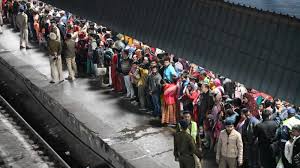17 Feb 2025 Indian Express Editorial
What to Read in Indian Express Editorial( Topic and Syllabus wise)
Editorial 1 : Express View on New Income Tax Bill: Ease of taxpaying
Introduction
The Budget for 2025-26 is noteworthy for providing substantial relief to India’s income tax payers, despite their relatively small number compared to the overall population. The government has chosen to forego ₹1 lakh crore in revenue to achieve this. However, the more impactful move is the introduction of the new Income Tax Bill, currently under review by a select committee of Lok Sabha. This initiative aims to modernize and simplify the Income Tax Act of 1961, aligning with the government’s agenda to eliminate obsolete laws and improve governance.
- Massive Tax Relief:
- Significant relief for taxpayers with ₹1 lakh crore in revenue foregone by the government.
- New Income Tax Bill:
- Designed to modernize and simplify the Income Tax Act of 1961.
- Part of the government's drive to abolish outdated laws.
- Key Features of the New Bill:
- Reduced Complexity:
- Chapters reduced from 47 to 23, making the law half its previous length.
- Language simplified, outdated provisions removed, and sections restructured.
- Improved Clarity:
- “Notwithstanding” changed to “irrespective” and “deemed” to “treated” to reduce misinterpretation.
- “Assessment year” replaced by “tax year” for clearer understanding.
- Simplified Exemptions:
- A single schedule for non-resident exemptions enhances readability.
- Cryptocurrency Regulations:
- Cryptocurrencies classified as capital assets.
- Tax authorities can access information from virtual digital spaces.
Conclusion
The new Income Tax Bill is a landmark move towards economic and regulatory reform. It simplifies tax compliance, reduces litigation, and modernizes tax administration, making it more accessible for taxpayers while enhancing transparency and governance.
Editorial 2: Express View on New Delhi railway stampede: An intolerable toll
The tragic stampede at New Delhi Railway Station, claiming at least 18 lives, marks the second Kumbh-related disaster within three weeks, exposing serious gaps in crowd management and administrative preparedness. The incident was triggered by a combination of factors, including train delays, overcrowded platforms, and miscommunication about a special train. Despite extensive safety plans for Kumbh devotees, authorities were caught off guard, underscoring the need for better crowd control strategies, especially during high-footfall pilgrimage seasons. This tragedy serves as a stark reminder of the importance of proactive measures and accountability in ensuring public safety.
- Cause of the Stampede:
- Triggered by train delays, overcrowded platforms, and an announcement about a special train.
- Administrative lapses and poor crowd management contributed to the disaster.
- Investigation and Accountability:
- Railways ordered a detailed investigation to understand the cause and fix accountability.
- Emphasis on transparent inquiry and corrective action.
- Recurring Issue:
- This was the second Kumbh-related tragedy within three weeks, with nearly 50 lives lost in total.
- Highlights inadequate safety measures during pilgrimage seasons.
- Challenges in Crowd Management:
- Religious gatherings account for about 80% of stampedes in India.
- Managing unexpected crowd surges at transit hubs remains a critical challenge.
- Need for Technological Solutions:
- Experts advocate using advanced technology, like drones, to monitor crowd density and identify pressure points.
- Technology was reportedly used at the Kumbh venue but needs to be scaled up at transit junctions.
Conclusion
The repeated tragedies during Kumbh expose critical gaps in crowd management and administrative vigilance at pilgrimage sites and transit hubs. With religious gatherings being particularly prone to stampedes, proactive measures, robust planning, and advanced crowd control technology are essential to ensure public safety. The ongoing investigation must be thorough and transparent, leading to actionable reforms and accountability. By learning from these incidents and enhancing safety protocols, authorities can prevent future tragedies and safeguard pilgrims' lives.


